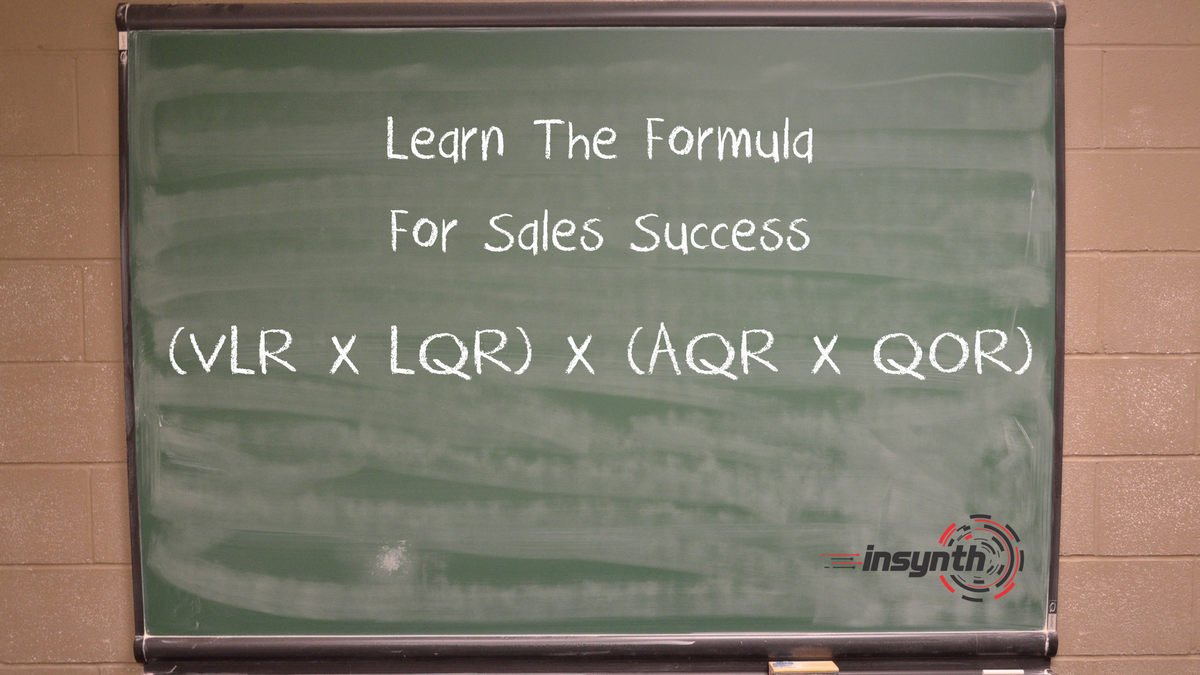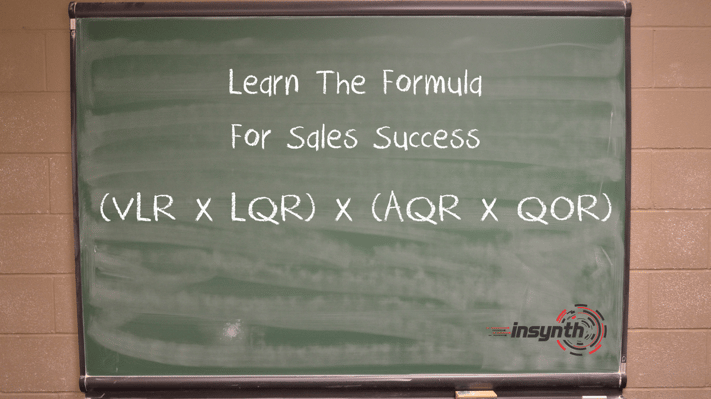

If you want to hit your sales targets this month, this quarter, this year and beyond, you will need to consistently produce the right results.
The problem is that many business owners and entrepreneurs can find it difficult to understand their sales pipeline and know where to focus their efforts and resources to really build the sales engine that will produce repeatable results week after week, month after month.
This simple formula for sales success will show you where to focus your efforts and help you grow your business with more consistency and a scientific approach to performance improvement.
Visitors To Lead Ratio (VLR)
Do you know how many visitors you get to your website every week, what pages they view, how long they stay on your site and how many enquire?
The ratio between visitors and leads that they generate is a good indicator of how well your offer is received in the market and how well your marketing messages are working.
Define what you class as a lead, include meeting requests, brochure downloads, email enquiries and, if you can monitor it closely enough, telephone enquiries.
Then simply divide your leads by the number of website visitors in a given period, and you have a meaningful metric to monitor on a weekly or monthly basis.
Lead To Quotation Ratio (LQR)
How many of your leads turn into a pricing enquiry?
This ratio give you a good idea of the quality of your leads and in turn how strong your proposition is.
Divide the number of pricing enquiries that you receive compared to the number of leads that you receive in a given period.
Average Quotation Value (AQV)
Again, a simple one to calculate - divide the total value of your quotes by the number of quotes created.
Quick tip, make sure that you don't count duplicate quotes more than once. It is a common mistake, where the same project is priced to two competing contractors and the value is counted twice - remember you can only win the job once.
Once you have a picture of your average quotation value, you will be able to understand how many quotations you will need to win to hit your sales figure.
So if your AQV is £5,000 and your monthly target is £100,000, then you know that you will need to win 20 jobs to hit your quota.
Quotation To Order Ratio (QOR)
Your quotation to order ratio will give you a good idea of how successful you are at closing.
Always work on value rather than volume, as this is what really counts. A good tip is to work on a longer, rolling period, depending upon the typical time it takes to secure an order after you have quoted it.
You may divide your total orders by your total quotations over a 90, 180 or 360 day period.
So How Do A Few Statistics Help You Win More Business?
Once your different ratios have been calculated you can begin to understand what needs to happen to deliver your sales targets.
For example;
| Monthly Website Visitors | 2,000 | |
| VLR (Visitor To Lead Ratio) | 2.5% | |
| Monthly Leads | 50 | |
| LQR (Lead To Quote Ratio) | 50% | |
| Quotations | 25 | |
| AQR (Average Quotation Value) | £5,000 | |
| Forecast Monthly Quotes | £125,000 | |
| QOR (Quote To Order Ratio) | 35% | |
| Forecast Sales | £43,750 |
In the above example, if you had a monthly £50,000 sales target you can see that current performance is going to leave you with a £6,250 shortfall (12.5%).
Looking at the key factors affecting sales, you can start to take action to affect the inputs and ratios to ensure that you can hit your quota. Your plan could include;
- A Pay-Per-Click (PPC) campaign to increase website traffic.
- Testing new content and calls-to-action to increase your VLR ratio
- Using lead nurturing campaigns to increase pricing enquiries
- Look at product add-ons and link selling to increase quotation values
These are just a few examples, but by increasing traffic by 5%, VLR by 0.2%, LQR by 5%, AQV by £250 and QOR by 3%, it will increase monthly sales to £61,845 per month, which is a 41% improvement, worth £217,000 per year.
Example 2 with focused improvements:
| Monthly Website Visitors | 2,100 | |
| VLR (Visitor To Lead Ratio) | 2.7% | |
| Monthly Leads | 57 | |
| LQR (Lead To Quote Ratio) | 55% | |
| Quotations | 31 | |
| AQR (Average Quotation Value) | £5,250 | |
| Forecast Monthly Quotes | £162,750 | |
| QOR (Quote To Order Ratio) | 38% | |
| Forecast Sales | £61,845 |
If you were given a target of increasing sales by 41% you would probably be mortified. But, by breaking down all of the key inputs and making minor improvements in every area, the aggregate effect can soon have a dramatic effect.
By testing different tactics you can quickly establish activity which can increase your sales performance in a long term, repeatable and sustainable manner.
Download Your Sales Performance Calculator
Insynth have produced a helpful calculator to help you understand how many website visitors you will need to hit your current sales targets and let you experiment with your ratios to see how modest changes can dramatically improve your sales results.
Read More
|
About Insynth
Insynth Marketing is a leading UK construction marketing consultancy based in Shifnal in the West Midlands. Insynth employ the latest inbound marketing techniques such as construction inbound marketing, to help building product manufacturers grow their businesses by aggressively driving sales lead generation activity.
As the only HubSpot certified agency to major on construction marketing, we bring together construction marketing strategy, digital strategy, website design, SEO, content marketing, email marketing, sales automation, marketing automation and HubSpot CRM implementation to produce successful campaigns and great results for our clients.

